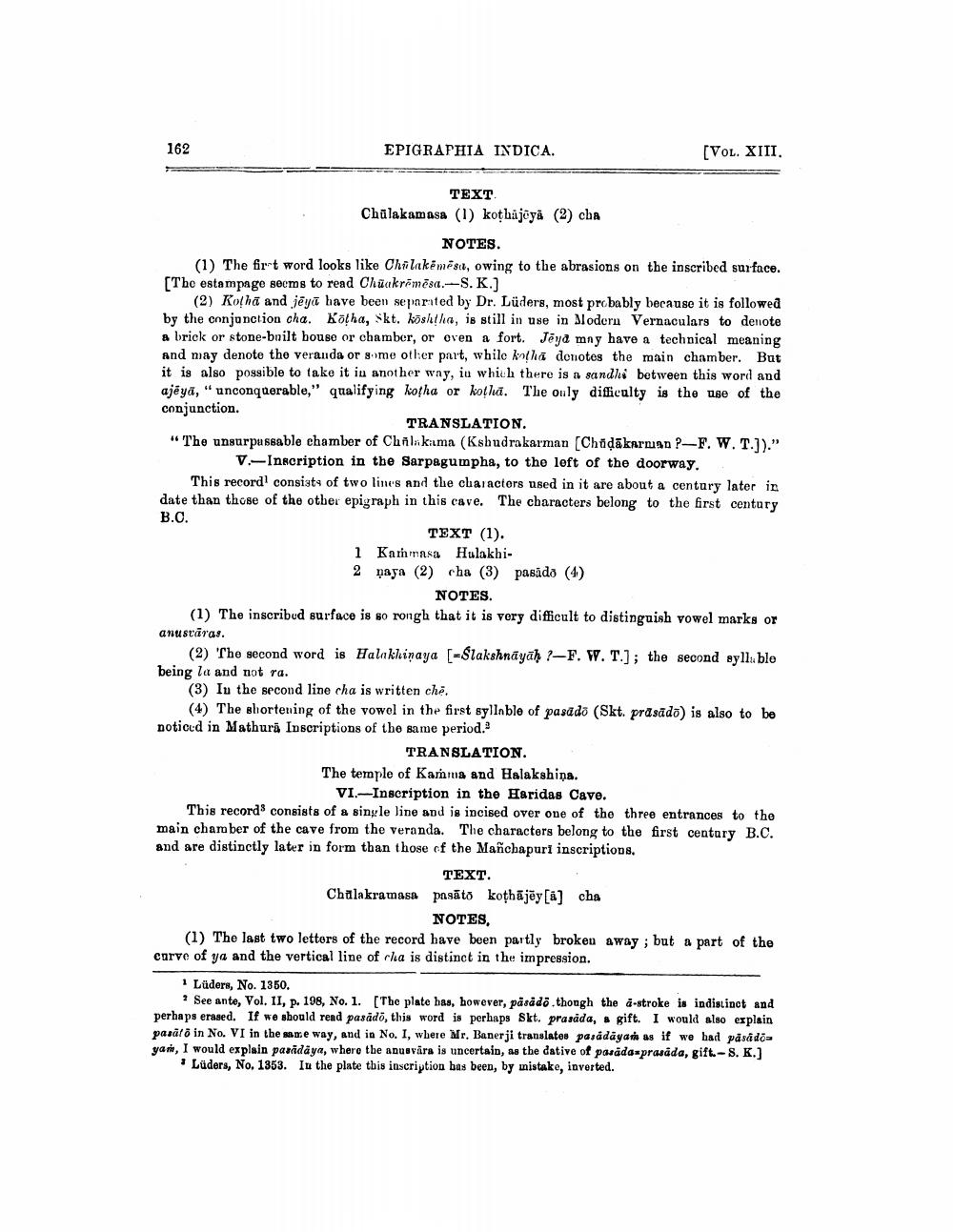________________
162
EPIGRAPHIA INDICA.
[VOL. XIII.
TEXT Chalakamasa (1) kothajoya (2) cha
NOTES. (1) The firt word looks like Chilakemesi, owing to the abrasions on the inscribed surface. [The estampage secms to read Chữakrāmēsa.-S. K.)
(2) Kotha and jēyu have been separated by Dr. Lüders, most probably because it is followed by the conjunction cha. Köha, Skt. köshtha, is still in use in Modern Vernaculars to denote a brick or stone-built house or chamber, or even a fort. Jēya mny have a technical meaning And may denote tho veranda or some other part, while antha donotes the main chamber. But it is also possible to take it in another way, in which there is a sandhi between this word and ajęya," unconquerable," qualifying kotha or kotha. The only difficulty is the use of the conjunction.
TRANSLATION. "The ungurpussable chamber of Chñlakama (Kshudrakarman (Chūļākarusn ?-F. W. T.])."
V.-Inscription in the Sarpagumpha, to tho left of the doorway. This record consists of two lines and the characters used in it are about a century later in date than those of the other epigraph in this cave. The characters belong to the first century B.O.
TEXT (1). 1 Karasa Hulakhi2 naya (2) cha (3) pasādo (4)
NOTES (1) The inscribud surface is so rongh that it is very difficult to distinguish vowel marks or anustāras.
(2) 'The second word is Halakkinaya [-Slakshnāyāh ?-F. W. T.]; the second syllable being la and not ra.
(3) In the second line cha is written che.
(4) The shortening of the vowel in the first syllable of pasado (Skt. prasādo) is also to be notioud in Mathura Inscriptions of the same period.
TRANSLATION The temple of Kamma and Halakshina.
VI.-Inscription in the Haridas Cave. This records consists of a single line and is incised over one of the three entrances to the main chamber of the cave from the veranda. The characters belong to the first century B.C. and are distinctly later in form than those of the Mañchapuri inscriptions,
TEXT. Chalakramasa pasāto kothājöy[a] cha
NOTES, (1) The last two lettors of the record have been partly broken away ; but a part of the curve of ya and the vertical line of cha is distinct in the impression.
1 Lüders, No. 1350.
? See ante, Vol. II, p. 198, No. 1. [The plate has, however, päsådő, though the a-stroke is indistinct and perhaps erased. If we should read pasādő, this word is perhaps Skt. prasáda, a gift. I would also explain pasalo in No. VI in the same way, and in No. I, where Mr. Banerji translates pasadayana as if we had pasadoa yar, I would explain pasadaya, where the anusvära is uncertain, as the dative of pasada prasada, gift.-S. K.)
* Lüders, No. 1853. In the plate this inscription has been, by mistake, inverted.




